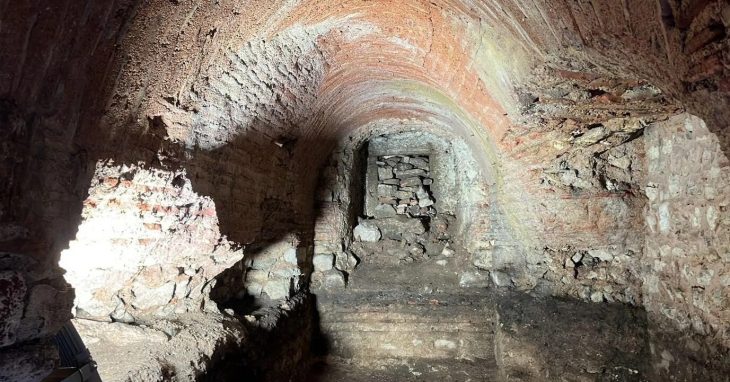Archaeologists in Istanbul have stumbled upon a remarkable discovery – a previously unknown underground passage dating back 1,500 years. Unearthed during ongoing excavations at the ruins of Saint Polyeuktos Church in the Saraçhane neighborhood, this passage offers a glimpse into the city’s rich history and remarkable engineering prowess.
The passage, located about 20 meters from the existing Haşim Işçan Passage, boasts impressive craftsmanship. Carved marble blocks, intricate reliefs, and even remnants of mosaics and stone inlays adorn its walls. This level of detail and artistry highlights the sophistication of Byzantine architecture during this period.
Mahir Polat, Deputy Secretary-General of the Istanbul Metropolitan Municipality (IBB), expressed his awe at the discovery. He emphasized the passage’s remarkable resilience, having withstood countless earthquakes that have plagued Istanbul throughout history. “This structure,” Polat said, “serves as a testament to the city’s architectural legacy and its ability to endure the test of time.”

Polat further emphasized the potential of this discovery for earthquake preparedness in Istanbul. The passage’s longevity in earthquake-prone zones offers valuable insights for modern engineers. He stressed the importance of studying the passage’s construction techniques, particularly the use of a specific mortar known as “Horasan mortar,” renowned for its strength and durability.
The excavation efforts haven’t just yielded the underground passage. Archaeologists have also unearthed a treasure trove of artifacts, including a statue, 681 bronze coins, stamped bricks, and various fragments of marble, ceramics, oil lamps, glass, and metal. These artifacts offer a tangible connection to the lives of those who inhabited this area centuries ago.
The ongoing analysis of these finds, including the examination of surface samples from the passage itself, promises to reveal more about the construction materials and techniques used during this era. This knowledge can not only enhance our understanding of Byzantine architecture but also inform future efforts to preserve Istanbul’s historical treasures.
The discovery of this secret passage is a significant addition to Istanbul’s rich tapestry. It serves as a reminder of the city’s long and fascinating history, buried beneath the layers of time. As excavations continue, we can expect even more captivating secrets to be unveiled, enriching our understanding of this vibrant and historic city.
